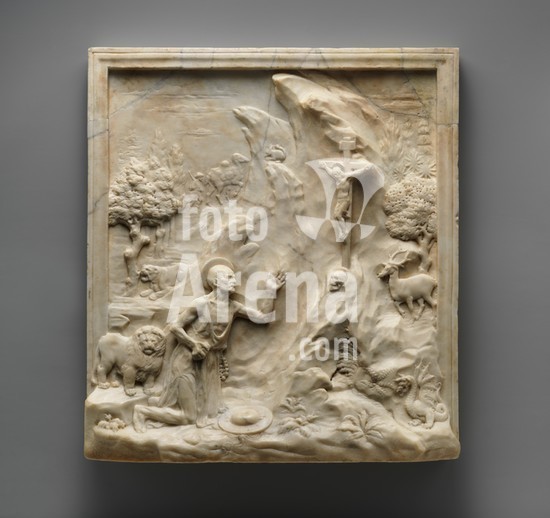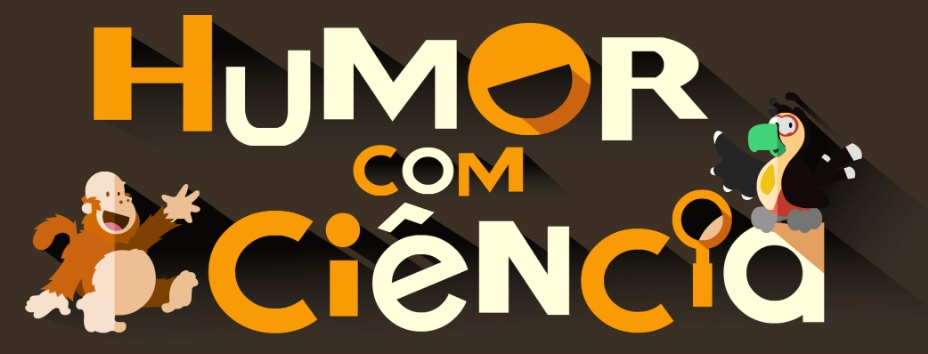
alb3659959
Saint Jerome in the Wilderness. Artist: Probably by Antonio Rossellino (Italian, Settignano 1427-ca. 1479 Florence). Culture: Italian, Florence. Dimensions: Overall (confirmed): 16 5/8 × 15 1/4 × 2 7/8 in., 31 lb. (42.2 × 38.7 × 7.3 cm, 14.0615kg). Date: ca. 1470.The Metropolitan displays in its galleries an important group of quattrocento reliefs of the Madonna and Child by such Italian Renaissance masters as Antonio Rossellino (see acc. no. 14.40.675) and Benedetto da Maiano (see acc. no. 41.190.137). Until Saint Jerome in the Wilderness entered the collection, however, the Museum had no example of a classic narrative relief. Beginning in 1424, when Lorenzo Ghiberti's first set of bronze doors for the Baptistery was set in place, narrative reliefs held signal importance in Florentine art. (It was Ghiberti who invented the device, echoed here, of showing the foreground spilling over the frame in the reliefs for his second set of Baptistery doors, the "Gates of Paradise.")[1] Small reliefs like this marble were often made for private devotions in a family chapel. The 1553 inventory of the Palazzo della Signoria, Florence, for example, mentions a low relief of Saint Jerome,[2] which could have been this one, although it is usually associated with a work by Desiderio da Settignano in the National Gallery of Art in Washington, D.C.[3] The subject is unsurprising: images of this gaunt ascetic abounded in the 1470s, as is attested by paintings attributed to Andrea del Verrocchio (Palazzo Pitti, Florence) and by Leonardo da Vinci (Pinacoteca, Vatican).Widely read during the Renaissance, Jerome's letters vividly describe his physical and spiritual trials in the desert outside Bethlehem, where, he tells us, he would "set up my oratory, and make that spot a place of torture for my unhappy flesh."[ 4] Furthermore, the best-selling compilation of saints' lives, Jacobus de Voragine's Golden Legend, relates charming stories of his relationships with animals, which are often woven into depictions of the present scene. We learn that he befriended a lion; the lion teamed up with a donkey to carry wood to Jerome's monastery; and some camel-driving merchants stole the donkey. These tales account for the lion, lioness, and camel in the relief. It is, in fact, a virtual bestiary: the stag, for instance, may be explained by the following passage from the Song of Solomon, "Behold, he cometh leaping upon the mountains, skipping upon the hills. My beloved is like a roe or a young hart," which is often interpreted in Renaissance exegesis as a reference to Christ, whose cross rises above the animal here. Other creatures -- a squirrel and a dragon -- also carried symbolic meaning in contemporary writings.[5]The references to religious and secular literature made this a stirring image in fifteenth-century Florence, yet it is the airy landscape that draws the viewer into the scene and encourages him or her to linger over its delightful details. Jerome and the animals inhabit a mountainous region that conjures atmosphere and depth within the compact limits of the relief. Twin peaks curve toward the saint as if sheltering him within the hollow at their base. As Jerome kneels on the rocky stage in the foreground, the lions stand or sit on ledges receding to the left; in the distance a trader and his camel disappear behind a crag. Jutting from an outcrop, the crucifix separates Jerome from the right side of the pictorial space, where beasts and foliage hint at a passage behind the peaks. Using a mountainous landscape to separate a composition into discrete areas was pioneered by Ghiberti in the Baptistery reliefs and by such artists as Domenico Veneziano in painting. Borrowing that formal device, the sculptor of this relief carved the marble intuitively, suggesting recession into depth rather than constructing it through the rules of one-point perspective. Careful observations of striated rock, different varieties of leaves, and wispy clouds breathe life into this natural world.The style of the work closely resembles that of a set of reliefs in Faenza Cathedral. Giorgio Vasari credited them to Benedetto da Maiano, but many later scholars have attributed them to Benedetto's master, Antonio Rossellino. [6] In 1985, however, Gary M. Radke returned the attribution to Benedetto, finding that they forecast another, slightly later set of reliefs by him in the chapel of Santa Fina, San Gimignano.7 Radke pointed out that in the Faenza reliefs the manner in which the foreground figure is related to the mountains, the use of foliage to fill out the middle ground, and the placement of animals in the background are all aspects of Benedetto's sensibility as well as Rossellino's. Even Mario Scalini, a scholar who attributes the Museum's relief to Rossellino, dates it to the 1470s by relating it to Benedetto's Stigmatization of Saint Francis in the church of Santa Croce, Florence.[8] And because it is clearly dependent on Rossellino's sculptural formulas, our relief was not surprisingly identified as his work when it was auctioned in New York in 1918.[9] Radke's arguments for Benedetto's authorship of the Faenza reliefs -- citing Benedetto's keen interest in narrative and his blocky figures and rich surface ornamentation -- are attractive, but the eminent scholar Francesco Caglioti continues to believe that Rossellino and his workshop were responsible.[10] Clearly, whoever carved the Faenza reliefs also carved the Museum's Saint Jerome in the Wilderness.Although we have no written record of its authorship, this relief's renown in the Renaissance is confirmed by the existence of two copies. A glazed terracotta of about 1510 attributed to Luca della Robbia the Younger (1475 - 1548) in the Casa Buonarroti, Florence, is clearly based on the composition, which the artist clarified through color, thereby losing atmospheric perspective.[11] There are a few changes in the details, but the basic form and the dimensions are the same. In another version (Victoria and Albert Museum, London), also attributed to Luca della Robbia the Younger, a bearded Jerome has been turned into a contemplative saint reading a book, not mortifying himself with a rock.[12] Rather, his arms are spread wide in adoration of Christ. This different interpretation may have been more appealing in a less fervently religious period than the 1470s, but the survival of the composition speaks for the fame of the relief long after its original conception.[Ian Wardropper. European Sculpture, 1400-1900, in the Metropolitan Museum of Art. New York, 2011, no. 5, pp. 23-25.]Footnotes:[1] See Andrew Butterfield. "Art and Innovation in Ghiberti's Gates of Paradise." In The Gates of Paradise: Lorenzo Ghiberti's Renaissance Masterpiece, pp. 16-41. Exh. cat. edited by Gary M. Radke, with Contributions by Andrew Butterfield et al. High Museum of Art, Atlanta; Art Institute of Chicago; The Metropolitan Museum of Art; 2007-8. Atlanta and New Haven, 2007, pp. 23 - 26.[2] "quadro marmoreo in rilievo schiacciato che rappresenta S. Girolamo"; quoted in Ida Cardellini. Desiderio da Settignano. Studi e documenti di storia dell'arte 3. Milan, 1962, p. 244.[3] Rudolph Wittkower. "Desiderio da Settignano's 'St. Jerome in the Desert.'" In Idea and Image: Studies in the Italian Renaissance, pp. 137-49. London, 1978, pp. 145 - 46.[4] Saint Jerome. Select Letters of St. Jerome. Translated by F.A. Wright. Cambridge, Mass., 1933, letter no. 12, pp. 66 - 69.[5] Song of Solomon 2: 8 - 9. For a general study of the symbolic meaning of animals in the Renaissance, see Herbert Friedmann. A Bestiary for Saint Jerome: Animal Symbolism in European Religious Art. Washington, D.C., 1980.[6] Giancarlo Gentilini. I Della Robbia: La scultura invetriata nel Rinascimento. 2 vols. Florence, 1992, p. 361.[7] Gary M. Radke. "The Sources and Composition of Benedetto da Maiano's San Savino Monument in Faenza." Studies in the History of Art (National Gallery of Art, Washington, D.C.) 18, 1985, pp. 7-27.[8] Mario Scalini in Un tesoro rilevato: Capolavori dalla Collezione Carle De Carlo. Exh. cat. edited by Mario Scalini and Angelo Tartuferi. Galleria dell'Accademia, Florence; 2001. Florence, 2001, p. 57, no. 18[9] See The Beautiful Art Treasures and Antiquities, The Property of Signor Stefano Bardini, sale cat., at American Art Galleries, New York, April 23 - 27, 1918, no. 420.[10] Francesco Caglioti. Donatello e i Medici: Storia del "David" e della "Giuditta." 2 vols. Florence, 2000, vol. 1, p. 133, n. 133, vol. 2, fig. 329.[11] Alfredo Bellandi in I Della Robbiae l'arte nuova della scultura invetriata. Exh. cat. edited by Giancarlo Gentilini. Basilica di Sant'Alessandro, Fiesole; 1998. Florence, 1998, pp. 291 - 92, no. iv.1.[12] Ibid., pp. 292 - 93, no. iv.2. Museum: Metropolitan Museum of Art, New York, USA.
DC
















































































